MusicRadar Verdict
Boringly predictable or reassuringly consistent depending on your viewpoint (not that the former is particularly valid), Roland has done it yet again with the TD-4K. And while the functional focus is on practice, rather than heavy-duty editing of sounds or production capabilities, the kit is a million miles from a sterile learning tool.
Pros
- +
the most organic-sounding, dynamic set that Roland has ever introduced at this price. Excellent rack.
Cons
- -
The brain's position on the rack is questionable.
MusicRadar's got your back
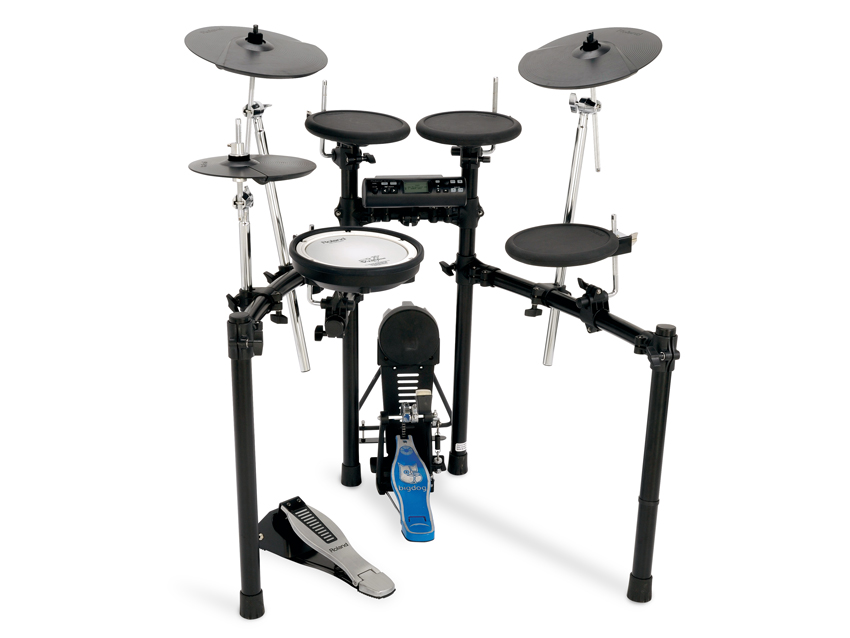
Roland TD-4K
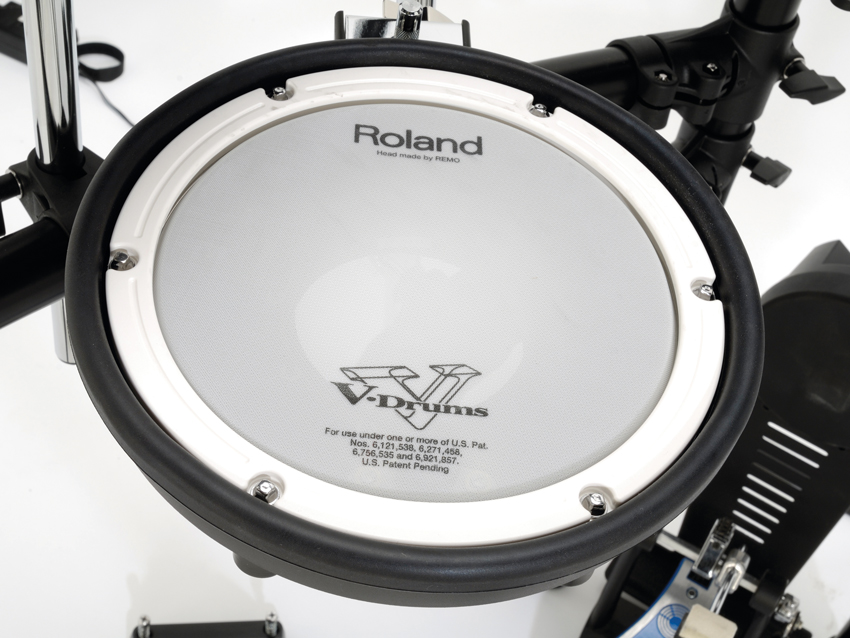
Roland TD-4K
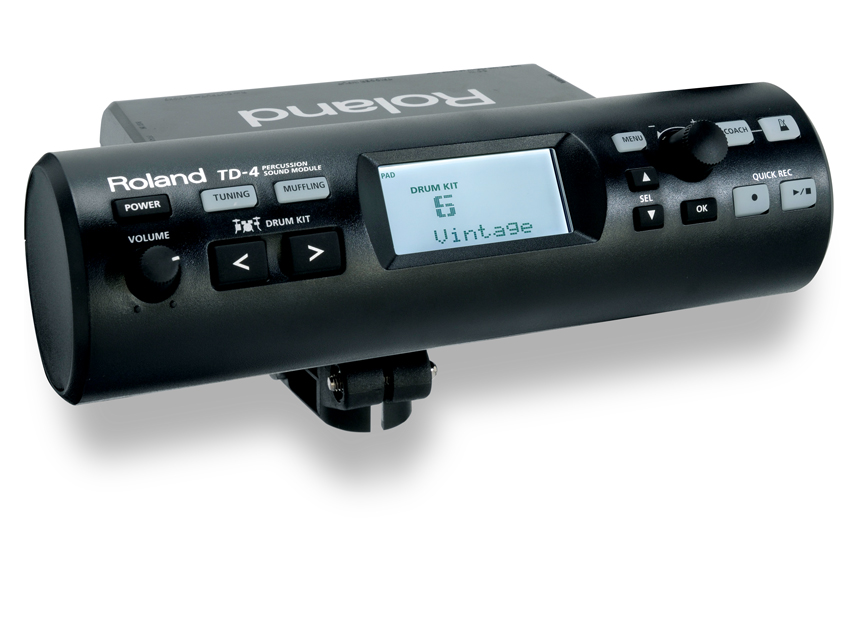
Roland TD-4K
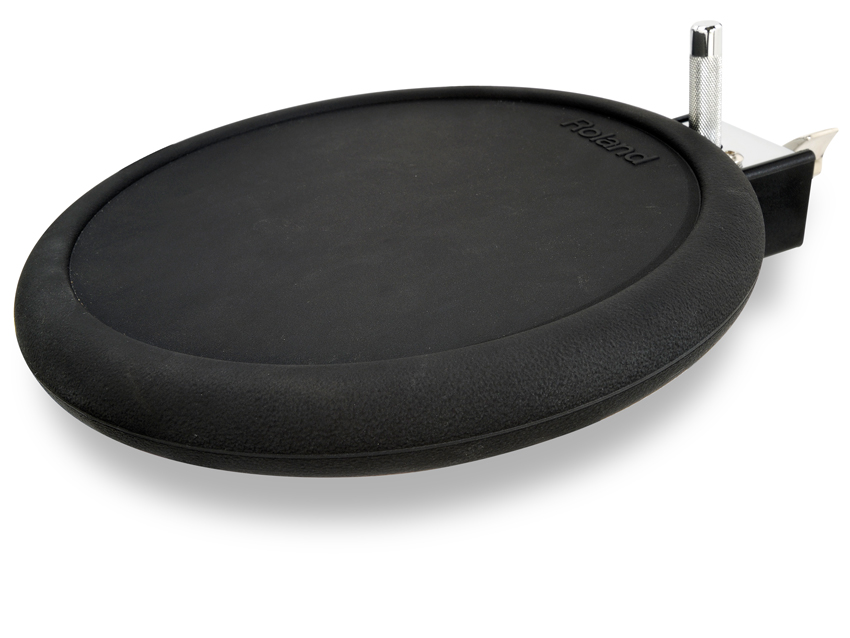
Roland TD-4K
Fizzy drinks, miracle age-repair make-up - everything is sold today with the promise of it being the 'best ever recipe'. Most of this stuff is so boring that, really, who cares? But when electronic drum set makers make similar claims for their new products, it's a rather different kettle of fish.
This happens on a regular basis, of course - in fact every time a new kit is launched. But the posturing is justified more often than not where digital drums are concerned.
"Even if you never switched on the Coach Mode, you'd still be spoiled by what is an array of exemplary, all-new, on-board sounds"
The simple fact is that technology continues to move on at such a pace that, even now, improvements in tone and responsiveness are coming in leaps and bounds. Roland has, of course, set a shining example of how to refine a product line over the last 10 years, so you'll be wanting to know if the new TD-4K continues this...
Build
Before we get into the tonal developments that the TD-4 module presents, the rack on which it (and the now familiar array of pads) is secured is worthy of a quick once-over.
Those well-versed in V-Drum evolution will notice that the black metalwork sports an extra couple of legs as compared to the simpler, flatter TD-3K rack. It's a feature that brings the TD-4 set-up into line with the pricier TD-9K rig, and to our minds, makes for a rather more rewarding physical interaction with the kit.
It's a simple thing, but having the two 'proper' extra rack bars to your left and right adds a higher end feel to the TD-4K. The TD-6K and TD-3K may have perfectly sturdy sections for hi-hat and 'floor tom', but we're all for the new legged look.
The kit wraps around you in snug fashion now too and, as with the whole V-Drum range, once you've got everything locked down, there are absolutely no concerns in terms of rigidity.
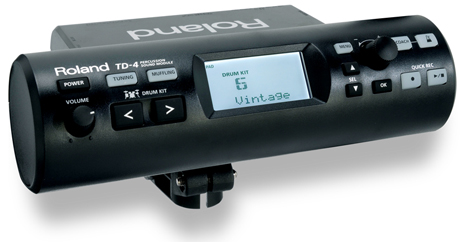
So, we love the rack. But there is one issue that raises its head, and that's the 'official' placement of the TD-4 brain itself. Where all previous Roland kits (with the exception of the diminutive HD-1 set) have their brains located on the left hand side of the rack, here the company suggestion is to secure the TD-4 bang in the middle, beneath the two toms.
It's a compact little unit (see the above image), but our initial feeling was that this was possibly the least suitable place to stick the 'control centre'.
It's not so much a fear of it being damaged (even unwieldy technique is unlikely to see a misplaced stroke hit the brain), it's more a case of only the screen being visible between the pads - the ends of the unit are obscured by the toms.
This may be a situation unique to set-up preferences. But we're inclined to think that we won't be alone in preferring the TD-4 positioned elsewhere. Which is easy enough to do, even if it does require a little bit of rack deconstruction.
Hands On
In practice, even with the TD-4 smack in the middle of the front bar, the kit proves immensely capable and usable. The brain is super-simple, so the fact that a few buttons might be obscured by the toms is less of a problem than it would be with more fully-featured modules.
But the TD-4 nevertheless offers handy sound-altering features in the form of Tuning and Muffling parameters, easily accessed and edited in seconds. Just press one of the dedicated buttons, hit the pad you want to tweak and spin the data dial on the right on the TD-4 to either increase or decrease the pitch or, er, mufflisation.
On the right hand side of the module lie the controls for the TD-4's training functions. Roland clearly has the 'improving drummer' in its sights with the kit; the company has a good track record of offering useful practice functions in its V-Drum sets and this one is no different.
Coach Mode features five different training exercises including the funky new Tempo Check, which lowers the click volume when you're bang in time, and raising it when you're out of time.
"Whether you're a metronome-obsessed shredder or simply a weekender groover, there is not much for you to dislike here"
Quick Record also allows you to put your efforts down on the TD-4's internal memory with one touch. It's an unfussy sequencing function, but one that keeps you honest about your feel and timekeeping - if you're serious about practice the TD-4K is a great partner.
But don't let the 'personal trainer' bits fool you into thinking that the TD-4 might sport only perfunctory sonic abilities. Even if you never switched on the Coach Mode, you'd still be spoiled by what is an array of exemplary, all-new, on-board sounds.
There aren't hundreds to choose from - the TD-4 has 25 acoustic, electronic and percussion kits - but they really are fabulously playable. It's the responsiveness of sets like our personal favourite 'Coated' that immediately impress.
Yes, the sounds are great, indeed the reverb is smooth and natural, but it's the extent to which ghost notes can be coaxed from the pads (particularly the PDX-8 mesh snare) that makes for such a 'real-feeling' dynamic sensation. A few years ago even the top-end V-Drums weren't this good.
If the selection of kit sounds within isn't quite doing it for you, there is a certain amount of editing available too. But there's not much menu-wading to do. Ambience type and level, kit set-up and so on are all just a couple of button pushes away.
And although there's no deep-level tweakery to be had, we actually like the immediacy that the TD-4 allows. The basic sounds are so good that there's little that needs to be done to enjoy the kit, so it becomes more about the playing experience than programming the elusive perfect set. And there's much to be said for that.
With its latest free update, Ableton has finally turned Note into the app I always wanted it to be
Technically capable, but struggle to make your tunes sound musical? 5 simple music theory hacks to make your tracks stand out
"Despite its size, it delivers impressive audio quality and premium functions as well as featuring a good selection of inspired sounds": Roland GO:Piano 88PX review









